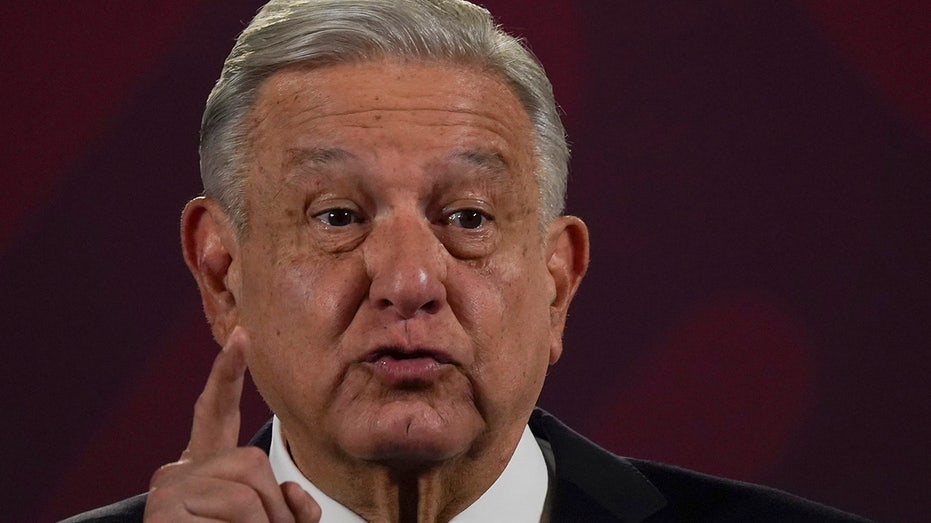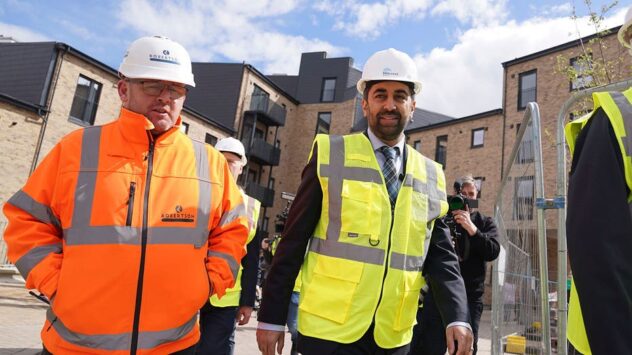
Mexico’s government issued a decree Monday that will force private freight railway lines to give preference to passenger train service over their normal freight runs.
The decree gives the two main private concessionary rail operators until Jan. 15 to present proposals for offering the passenger service themselves. If they decline, the government will put the army or the navy, which have no experience operating railways, in charge of the services.
Almost all of Mexican railway traffic currently carries freight except for minor tourist train services like northern Mexico’s Copper Canyon and the western tequila-producing region around Jalisco.
AMLO SAYS HE’LL FORCE MEXICAN FREIGHT RAIL COMPANIES TO OFFER PASSENGER SERVICE
The government wants four short inter-city routes where passenger trains would run on tracks normally used only for freight.
But the biggest challenge could be three long passenger routes the government also wants to establish from central Mexico to the U.S. border: the 700-mile proposed passenger service from Mexico City to Nuevo Laredo, the 900-mile run from Aguascalientes to the border city of Ciudad Juárez, and the 1,350-mile route from the capital to the border city of Nogales.
The decree combines two interests of President Andrés Manuel López Obrador: his nostalgia for passenger train services that ran in Mexico before private concessionary operators were allowed in, and his reliance on the military for everything from law enforcement to building projects.
The two main private operators in Mexico are the multinational Canadian Pacific Kansas City, known as CPKS, and Mexico’s Ferromex. Both operate freight services.
Few passenger train systems in the world are profitable. Most rely heavily on government subsidies. The decree contains no mention of whether the private companies would be offered subsidies.
Mexico’s army is building the Tren Maya tourist railroad on the Yucatán peninsula, and the Navy is in charge of the revamped trans-Isthmus railway connecting the Gulf of Mexico to Pacific ports. But neither is fully operational.
In the decree, the president’s office wrote that “preference will be given to public passenger rail service, and freight rail transport will be respected, according to the terms of the corresponding concession.”
That raises the potential for delays. When the government last provided passenger service through a state-owned company in the 1990s, trains seldom ran on time.
Ferromex hasn’t commented. In a statement over the weekend, CPKS wrote that it doesn’t expect problems, as long as the Mexican government lives up to its pledge not to allow the proposed passenger services to disturb freight runs.
“The draft decree emphasizes that the public freight rail service will be respected and as such, we do not expect an adverse impact on our concession,” the company wrote. “CPKC has extensive experience hosting passenger rail services in multiple locations across its network in the United States and Canada while efficiently managing freight service.”
MEXICO’S AMLO TO HOST MULTINATIONAL IMMIGRATION SUMMIT WITH LATIN AMERICAN, CARIBBEAN LEADERS
The company said its Mexican subsidiary, CPKS de Mexico “has previously reached an agreement with the Mexican Federal Government to perform a study of what is required for the proposed new passenger rail service on the right of way of the corridor between Mexico City and Querétaro.”
The government also wants to establish passenger service from Mexico City to the north-central city of San Luis Potosí, through Monterrey and on to the Texas border city of Laredo. CPKS said that “as required by our concession, CPKC de México will work closely with the Mexican Federal Government to evaluate passenger service on that corridor.”
The government also wants to run passenger trains from Mexico City to the Gulf port city of Coatzacoalcos, from the capital to the nearby cities of Queretaro and Aguascalientes, and a short run from the new Mexico City airport to the nearby city of Pachuca.
The plans also include connecting the Pacific coast port of Manzanillo with the cities of Guadalajara and Irapuato. Manzanillo is mainly known as a freight port and has relatively little tourist infrastructure.
Because rail lines are currently designed for and operated as a slower-moving freight services, and are often full of trains and at-grade crossings, the passenger trains may not move very fast. When long passenger runs were offered in the 1990s, they sometimes took days to reach their destination.















